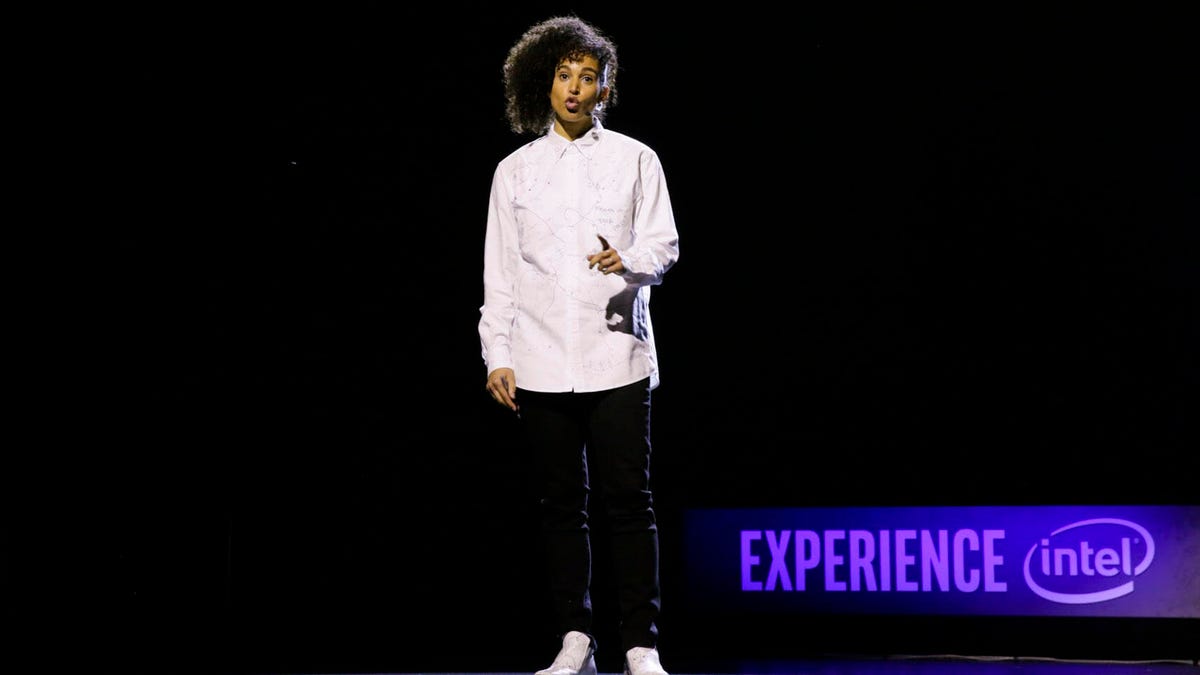Intel's new diversity goals: Put women in 40% of technical posts by 2030
In its Corporate Responsibility Report, the chipmaker also says it wants twice as many women and underrepresented minorities in senior positions.
As progress toward increased diversity in the tech industry lumbers along, Intel is staking out new goals for itself and other companies for 2030. According to the company's Corporate Responsibility Report, out Thursday, Intel says it'll increase the number of women in technical roles to 40% and double the numbers of women and underrepresented minorities in senior roles by 2030.
The report also covers topics like sustainability, supply chain and social impact.
"We have a track record of setting ambitious goals and transparently reporting on both our progress and our challenges," CEO Bob Swan said in the report.
The report comes as tech firms face increased scrutiny around their demographics. In 2014, when big tech companies like Google and Facebook started releasing diversity reports, the industry got numbers to confirm what was already pretty obvious -- white men dominate tech.
As companies have rolled out initiatives ranging from mandatory unconscious-bias training, employee resource groups and philanthropy directed at educational organizations, the percentages of women and minorities tick up slowly by the year, if at all. Some reports still don't disclose intersectional data (for example, not just the percentage of women at a company, but specifically the percentage of women of color).
Over the last five years, Intel's been among the companies trying to shift its own workforce toward being more heterogeneous. At CES in 2015, then-CEO Brian Krzanich pledged $300 million toward diversity efforts, tying executive compensation to hiring goals and saying Intel would reach full representation by 2020. In 2018, Intel did reach full representation two years early, meaning its workforce mirrored percentages of women and minority groups in the industry. In 2019, Intel said it closed its gender pay gap. The chipmaker also spends $1 billion every year on "diverse-owned suppliers." About $200 million of that goes specifically to women-owned suppliers around the world.
Half a decade later, Intel is eyeing how to hit that 40% of women in technical roles, when none of the big companies like Google, Apple or Facebook have crossed the 30% mark. Intel, for its part, stands at 27%.
Why diversity matters
Barbara Whye, Intel's chief diversity and inclusion officer and VP of human resource, explained that Intel set a goal of 40% when considering other demographic information available, such as the percentage of women in the US workforce broadly (46%) and the percentage of women graduating with college degrees (57%). She also acknowledged it's a big swing.
"We aim for big, audacious goals," Whye said. "We set these impossible goals, and then we bring the engineering mindset just like we would to any other quality issue inside of Intel or any other engineering challenge inside of Intel."
Intel has launched a variety of initiatives that address junctures at which women and people of color tend to leave their jobs (or don't end up in tech in the first place). These moves include establishing relationships with historically black colleges and universities; establishing more than 30 employee resource groups and hiring training managers to lead more diverse and inclusive teams.
There's also the prospect of doubling the percentage of women and underrepresented minorities in leadership roles. Research has shown that having diverse leaders can help attract and retain a diverse workforce, signaling there is a path forward within the company.
When asked about specific steps Intel will take with regard to women of color (an area where many companies are notoriously weak, particularly when it comes to leadership positions), Whye cited internal leadership councils geared toward black and Latino employees, for example, that focus on creating a pipeline of talent for senior leaders, and also weigh in on corporate diversity strategy that addresses not just women, broadly, but women of color.
"It's not enough to have representation if you're not having that representation at the highest levels of influence in the organization," Whye said. "Leaders and managers hire, they progress, they fire. And if you don't have the right level representation, it's very difficult to sustain the inclusive mix that he worked so hard to create."
Beyond the company itself, Intel is starting work on what it calls a Global Inclusion Index. It plans to recruit other companies in the industry to come together to agree on a set of shared metrics and language for discussing what exactly diversity and inclusion means. This idea stems from a report from McKinsey and Melinda Gates' Pivot Ventures which identified "lack of consistent and comparable definitions and data regarding inclusion at the industry level" a barrier to progress.
While research points to diverse businesses and teams being more creative and more innovative, Whye used a real-world example of why the industry needs to diversify: the coronavirus.
"My worry is that there's a voice in a conference room or in a virtual Zoom room today that has a solution to a problem," she said, "but that voice is quiet, because we haven't created the inclusive environment for that voice to be heard."


